#mid century ephemera
Text

Three County View, Symonds Yat, Herefordshire - 1960s Postcard
#three county view#symonds yat#herefordshire#vintage 1960s#1960s britain#1960s#vintage postcards#vintage ephemera#old postcards#mid century ephemera#mid century britain
4 notes
·
View notes
Photo
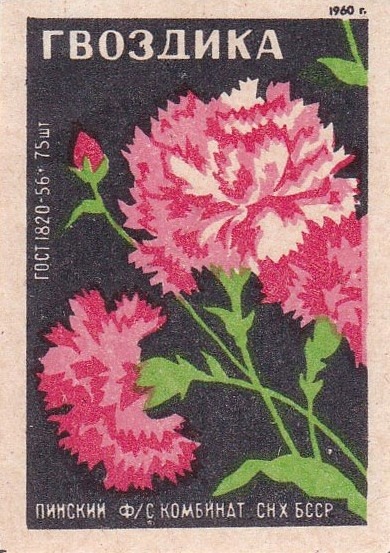


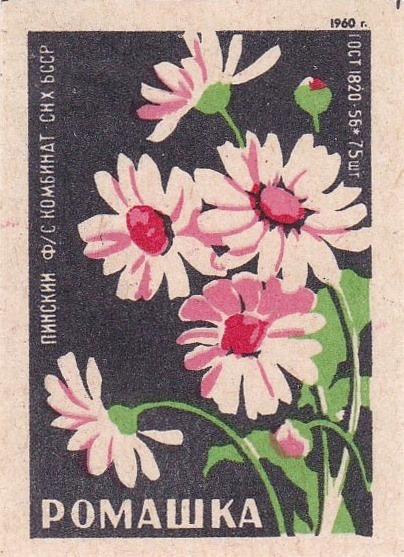




Matchbox labels from Pinsk Match Factory in Belarus (1960)
6K notes
·
View notes
Text
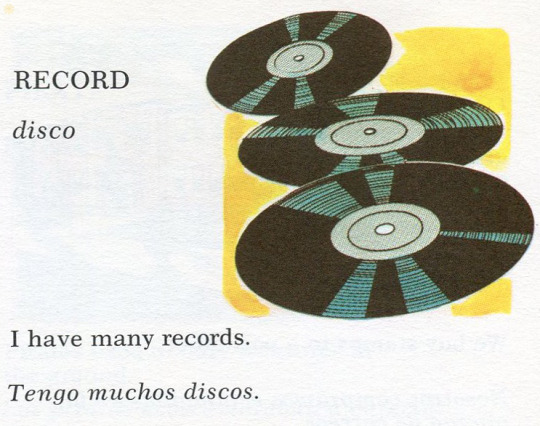
Record
From Mi Primer Diccionario Ilustrado De Inglés, Dixon and Fox, 1974.
661 notes
·
View notes
Text

wedding card, 1965
#vintage#vintage ephemera#60s#sixties#1960s#1965#vintage cards#vintage greeting cards#pink#midcentury#mid century#retro#vintage illustration#vintage design#hsc:misc*#uploads*#queue
55 notes
·
View notes
Text


Recent Acquisition - Ephemera Collection
Le-Wood Custom Homs. For Sale by Le-Wood Homes of Waverly, U.S. Route 460 E., Waverly, Virginia.
13 notes
·
View notes
Photo

Peg board, the epitome of high style.
#home décor#interior design#interior decorating#mid century modern#midcentury modern#1950s#1950's#ephemera#funny#humor#humour
57 notes
·
View notes
Text



Saturday night hanging out.
45 notes
·
View notes
Text
History by Hancock
I’m always attracted to mid-century messaging; advertising seems to explode around that time and much of it reflects contemporary society, for better or worse. I came across some “historical” ads by John Hancock Insurance a couple of years ago, and since then have been assembling a small “collections”. These full-page ads ran in national magazines from the 1940s to the early 1960s, and while they…
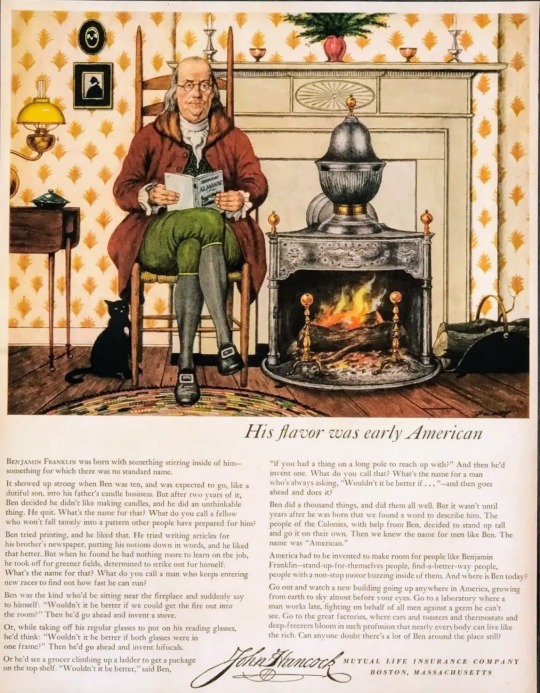
View On WordPress
4 notes
·
View notes
Text
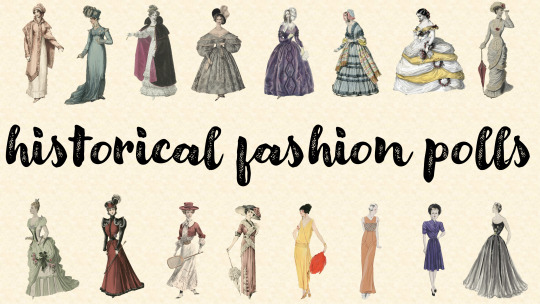
hello and welcome to historical fashion polls!
i'm so glad you're here and i hope you enjoy your stay 🥰
here (below the cut) you'll find all the relevant info related to the blog:
about the blog and the curator
image submission
requests
never hesitate to send in a message if you have questions, comments, or just want to say hi ☺️

this blog is dedicated to historical fashion polls!
currently, i limit myself to fashion plates, catalogue images, and other mass-produced fashion illustrations (explanation here)
the main timespan covered by the blog is 1770-1990 (explanation here)
however, i am happy to receive image submissions from outside these parameters – more info on making requests and submitting images below!
discussions about what content will be featured on the blog can be found under the tag "curatorial updates"
relevant decades and centuries are tagged on all posts

my name is charlotte (she/they) and i'm the curator of the blog! ☺️
i'm an art history phd student and aspiring professor studying late 19th century british and american art, primarily ephemera and "visual culture" (like fashion plates, book and newspaper illustrations, scrapbooks, photographs, etc.)
my main blog (where i talk about art history and music and make edits) is @ourstaturestouchtheskies
my ramblings can be found under the tag "the curator speaks"
my lovely conversations with all of you can be found under the tag "curatorial correspondences"

i'm very happy to receive image submissions from you all!
you can do that through the ask box, by submitting a post, or via direct message
image submission requirements (without these i won't be able to feature your image 😔😔)
please include the year or decade the image represents
please ensure that we can see the clothing clearly enough to get a sense of what each garment looks like
since this is a poll blog, please be sure that the garments chosen are at least somewhat comparable
if sending in images via dm, let me know whether you would like me to tag you in the post that features your image
as always, feel free to let me know if you have questions on any of these requirements! ☺️

i'm also very happy to take requests!
if you have something specific you'd like to see featured on the blog, send me an ask!
please just remember that the kinds of images i myself will source are primarily from fashion plates that span from 1770-1990 (more detailed info available above)
if your request is outside these parameters, i encourage you to submit the images you'd like to see featured! (more detailed info available above)
to give a sense of the kinds of things that folks have requested, both pending and resolved requests are available below

requests that i have received but for which i have not yet been able to add images to the queue
footwear
lower-middle class fashion
40s skiwear
late 19th c artistic/aesthetic dresses
historical sleepwear/nightgowns
armor?

requests that i have received and have either already been featured on the blog or are currently in the queue
masc fashion (late 18th c, early-mid 19th c, early-mid 20th c)
bloomers
headgear
swimwear
80s prom/bridesmaid dresses
20s tennis outfits
40s/50s pjs
#finally made a comprehensive intro post!!#historical fashion polls#the curator speaks#curatorial updates#long post#intro post
35 notes
·
View notes
Text
Merry mid-century Christmas
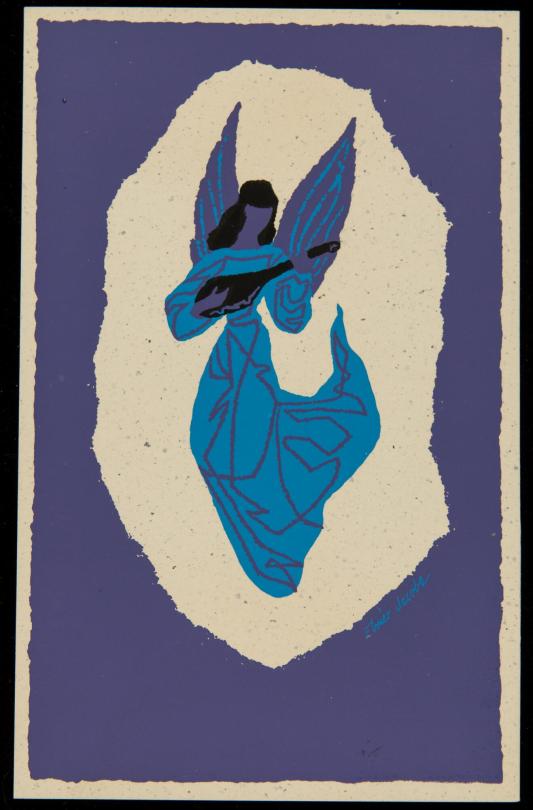
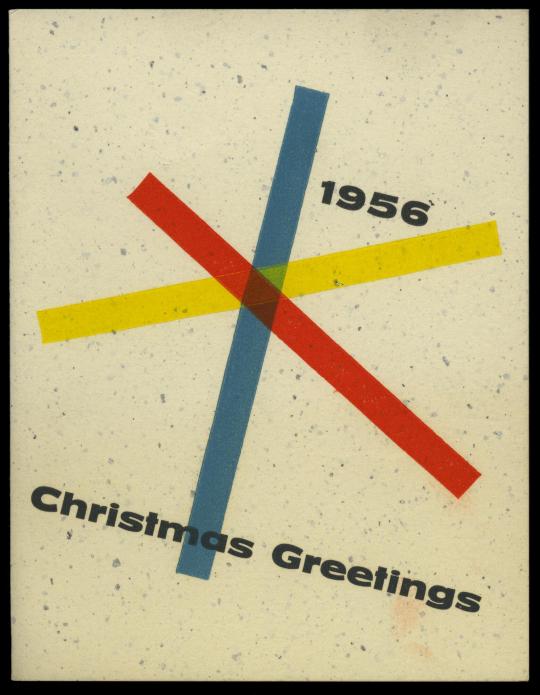
Mid-century modern design is characterized by minimalism, clean lines, geometric shapes, and bold colors -- an aesthetic on clear display in these holiday cards, primarily drawn from the Newberry's John M. Wing Foundation printing ephemera collection.
And what is ephemera? Glad you asked! Per our research guide:
At the Newberry Library, we use the general definition of ephemera offered by Maurice Rickards, namely the “minor transient documents of everyday life,” mostly printed and mostly on paper. The use of the word “transient” implies that once these items had served their intended purpose they were generally expected to be discarded. Paper is by far the most common medium but fabric, metal, wood, plastic, and other materials make up many ephemera. Some examples, moreover, are not printed but written out, stenciled, drawn, or painted...
Learn more at the Newberry’s Printed Ephemera research guide
Browse holiday cards at Newberry Digital Collections

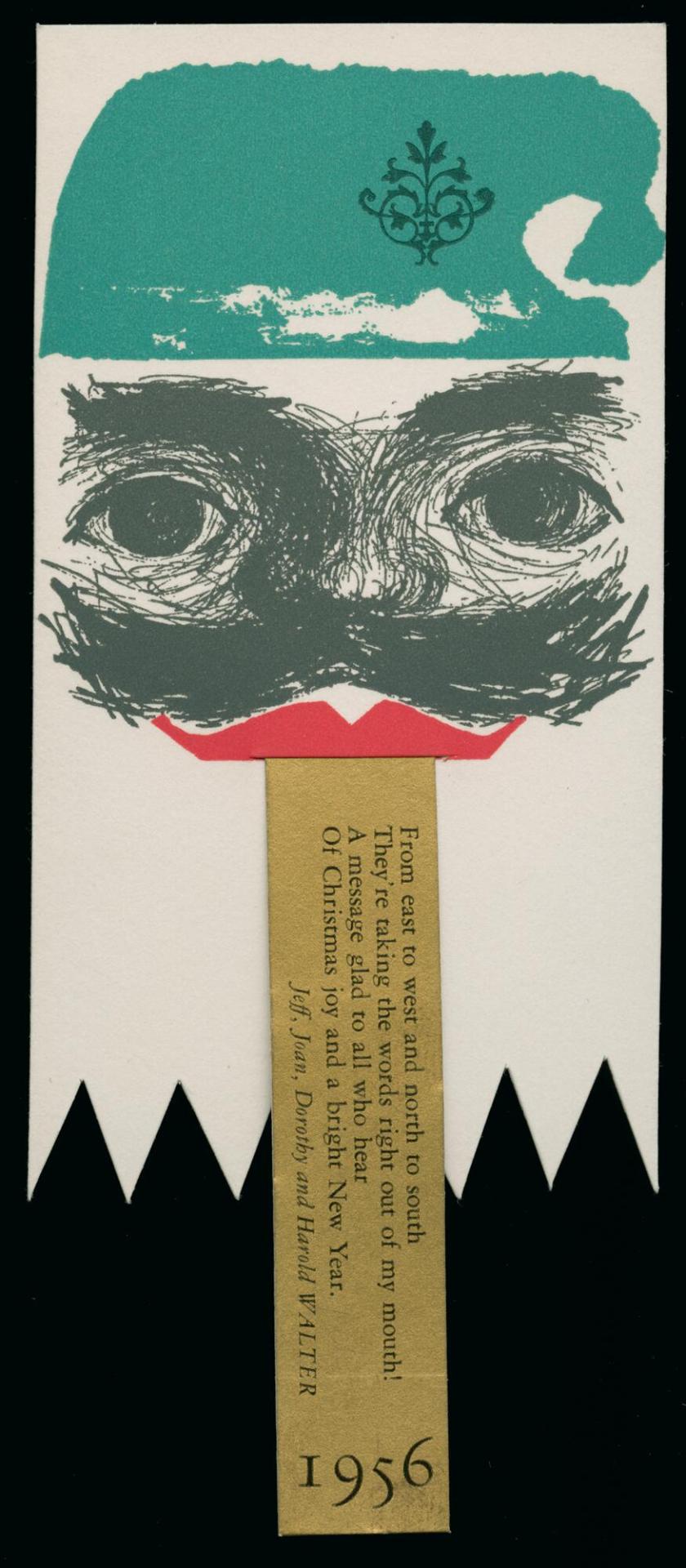
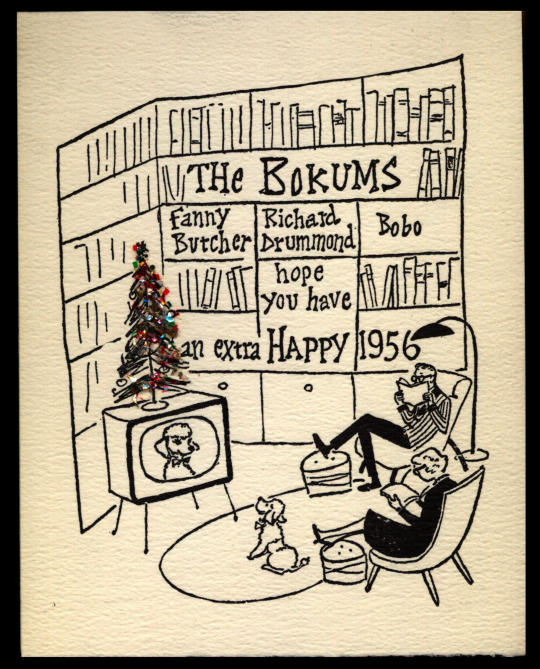
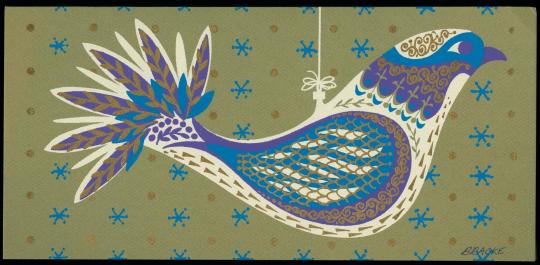
#newberry library#libraries#special collections#christmas#christmas cards#vintage christmas#graphic design#mid century modern#collection stories#newberryj
58 notes
·
View notes
Text

Symonds Yat, Herefordshire - 1960s Postcard
#1960s postcard#vintage 1960s#mid century britain#mid century ephemera#1960s ephemera#vintage ephemera#yat rock#symonds yat#herefordshire
15 notes
·
View notes
Text

1968 AC Spark Plugs Cool Cat Sticker
from: Ad Boy: Vintage Advertising with Character, 2009.
#groovy#vintage illustration#cars#cat#vintage sticker#vintage ephemera#mid-century#60's#1968#my scans
289 notes
·
View notes
Text

So, as promised, I thought I would introduce the museum where I am currently employed as an assistant curator and share a bit of the history. Point Ellice House is one of nearly a dozen provincially owned heritage sites across British Columbia. We have over 12,000 objects, and it is my job to care for not only the artifacts but the historic house as well. I run a strict pest management and cleanliness regimen that helps to preserve the house and all of the neat artifacts on display (and in storage) under its roof.
Like most museums, this place has a very colonial history. Point Ellice House is among the oldest homes in Victoria and was constructed between 1861 and 1862 for Catherine Wallace (daughter of Hudson’s Bay Chief Factor, John Work) and Charles Wentworth Wallace. By 1867, the couple fell on hard times and were forced to sell the home, at which point the O’Reilly family moved in. The O’Reilly’s would live at Point Ellice House until 1975 when they sold the house (and everything in it) to the province. Three generations of the O’Reilly family lived at Point Ellice House over 108 years, and they rarely threw things away, resulting in a massive collection of Victorian, Edwardian, and mid-20th century household ephemera. It is an amazing collection, and I am so lucky to be able to work with it. In my next post I will talk a bit more about the O’Reilly family and how they were able to afford such a luxurious lifestyle (and what that meant not only for the First Nations people of BC, but the Chinese settlers who also called this city their home).
This is primarily an introductory post, but please let me know if you have any questions you would like answered!
If you enjoy these posts, I also have a YouTube channel where I chat “in person” about niche historical topics and museums. If you enjoy my content, you can buy me a coffee or join one of my membership tiers (which have some juicy perks!). Thank you for joining the adventure!
109 notes
·
View notes
Photo
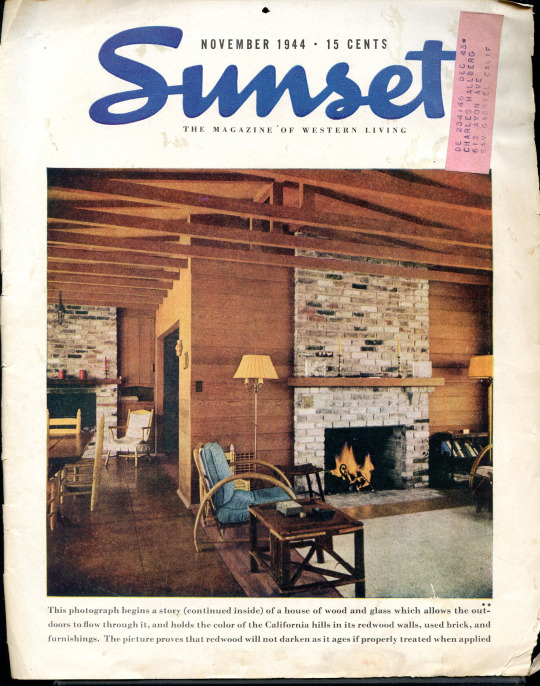
Sunset Magazine November 1944
#magazine cover#magazine#mid century modern#midcentury modern#1944#vintage interior#1940s#1940's#ephemera
37 notes
·
View notes
Note
For the fanfic ask game!
(14) If you could see one of your fics adapted into a visual medium, such as comic or film, which fan fic would you pick? (and also which medium)
(17) What’s something you’ve learned about while doing research for a fic?
(30) Ask anything! Who is your current favorite character to write?
Fic Writing Meme
(14) If you could see one of your fics adapted into a visual medium, such as comic or film, which fan fic would you pick? (and also which medium)
I have strongly considered making a graphics package for REVERSE THE BONE that’s just like, all the material culture ephemera Hinamori collected over the course of the Train Job—Kira’s map, packaging and flyers from Iwatobi, a tourism map of East Rukongai complete with stamp rally, the Takenoyu business card… I love that kind of in-universe graphic design, and I’d already made the train tickets. Buuuut if I made more graphics, it would take that time away from writing.
Other than that, I always think of D O N K I in visual terms, because Hitsugaya spends so much of that fic being overstimulated by Worm TVs and weird cups and fast trains and, of course, Don Quijote itself. It’s a fairly melancholy fic, but the visuals that attend it all are so absurd I feel like it would be cool to see in a visual medium that could really play with that contrast. Maybe one of those books where you can pull new elements into the scene via pull tab, or open little doors, or initiate fancy pop-ups! THERE’S A DONKI AT THE END OF THIS BOOK:

(Kyoto May 2023) "That's just the aesthetic of any dollar store" YEAH but you can buy perishable prepared foods inside this one somewhere! (By the socks.)
(17) What’s something you’ve learned about while doing research for a fic?
I wrote a post-TYBW fic that involved spending a lot of time burying bodies in mass graves, because the only divisions that got mentioned as cremating their dead were the 11th and the 4th. The body burying happened for the ~vibes and because it didn’t occur to me to think about it, and it wasn’t until after writing it that I had the thought that like, oh hm, why wouldn’t everyone be cremated? Because in my mind Japan is a country of cremation. So I assumed for years that the whole fic was based on a flawed premise, and oh well, it’s Soul Society so it does whatever I want it to, I’ll live with that.
But then when writing the Train Fic, I looked up how bodies might be transported, and what kinds of receptacles were used. And I was like, well, it’s really not going to be the same visual if it’s just a bunch of boxes of ashes, lol. But in my reading, I learned that the dominance of cremation in Japan is super recent! Like mid-20th century recent! And my perception otherwise is a very Buddhist bias! After that, I ended up starting research in the Yayoi period and working my way forward, because I figured I’d get the full historical picture and then decide how I wanted to imagine Soul Society’s version of that swathe of history, since I figured 1) lifespan difference might result in some pre-Edo holdovers when it comes to the basics, and 2) Soul Society wasn’t going to have the same socio-historical pressures driving change, so in those instances where they were choosing to model things they did after the Living World, they probably also just cherry-picked whatever they vibed with lol.
Anyhow, this was a cool, short, pretty cute video about ancient burial practices and burial jars!
(30) Ask anything! Who is your current favorite character to write?
HAHA realistically, whoever’s feeling collaborative and is willing to be nice to me. 🥺 But in the extremely *likely* scenario where someone puts a gun to my head and says "you have to write a Bleach fic right now, while we watch, or we shoot you!" I’d probably choose to do it with Matsumoto.
Because she’s patronized one Junrinan confectionary at least one time, and was excited about Orihime’s cooking, and loves shopping and celebrations of all kinds, and learned traditional dance despite obviously not growing up in The Scene, my mind has kind of spun Matsumoto into someone who sees a lot of value in experiencing and learning about different cultures (which in her context primarily means Rukongai districts), and it’s fun to write her interfacing with all these things. She doesn’t seem to have strong ties to the district she came from, necessarily, but I feel like she has strong values around recognizing Rukongai at large as a real place with infinite cultural particularities—particularities she wants to honor and know about—not just a blank slate waypoint.
Closer to canon, she has so many interesting relationships with people all across the board, you can kind of bring her into any situation and she’ll probably have some kind of generative connection to it. I also love that even though she’s open to conversations that might be really difficult OR down to clown, she also has a private core that she doesn’t share, and it can be really fun to play with that dialogism when narrating from her POV. She’s just a really good time all around!
8 notes
·
View notes
Text
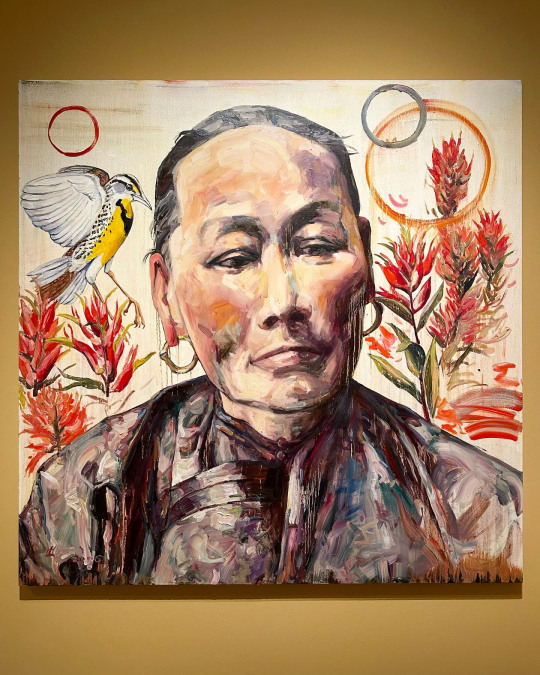
(Hung Liu “Portrait of China Mary”, 2006, Oil on canvas)
Currently at The James Museum in St. Pete, is From Far East to West: The Chinese American Frontier, an informative show that includes many beautiful paintings. There’s so much history in America that often doesn’t get taught in school. This is a great opportunity to learn about this immigration story through artwork as well as text.
From the museum about the exhibition-
While European American settlers gradually pushed the United States frontier westward throughout the 1800s, the West coast of the country was developing independently as well. Accelerated by the discovery of gold mid-century, the population boom included Chinese immigrants who crossed the Pacific Ocean to California.
Most 19th century Chinese immigrants came to their new country from the coastal Canton region (province of Guangdong today) in southeastern China. Starting over on a different continent away from familiar surroundings and culture would be challenging, but for many decades anti-Chinese hostility and exclusion laws made settling in the United States even more difficult. The achievements of Chinese immigrants paved a path for future generations and are a testament to strength and perseverance.
The foundation for the exhibition highlights narratives of Chinese America from the 1850s to the 1930s. The paintings-all created by Chinese Americans in the 21st century-reflect inspiration from this history. The painters are also fueled by their own, more recent immigration stories to the United States after China’s Cultural Revolution (1966-1976) and their rigorous art training in the government-sponsored movement of Socialist Realism. After China opened to the rest of the world in the late 1970s, many Chinese artists-like Mian Situ, Jie Wei Zhou, Benjamin Wu, Hung Liu, and Z.S. Liang, all featured here were inspired to immigrate to the United States in search of greater opportunity.
Here, these artists’ historical interpretations speak to culture, identity, community, and resilience. Related objects and ephemera from the period support these stories. From the Gold Rush to Angel Island, this exhibition reveals often overlooked but significant contributions and perspectives of Chinese immigrants that deepen our understanding of U.S. history.

Hung Liu “Dandelion with Small Bird”, 2017 Mixed media
About the above painting from the museum-
Dandelions and their fluffy seed pods can be found anywhere in the world and thrive wherever they land. Their migratory nature allows them to survive a journey across vast lands even across oceans and take root anywhere in the world. For Liu, the dandelion represents her own tenacity and ability to thrive in the face of adversity.
The dandelions, fragile in nature and tattered by the lightest breeze, mimic how images, and personal narratives, too, can be scattered by time and the winds of history —as well as by the rhythms of feast and famine …
–Hung Liu

Mian Situ “Blasting a Route Through the Sierra Nevada, 1865, Central Pacific Railroad”, 2018, Oil on canvas

Mian Situ “The Gold Seekers , Chinese Camp, 1850”, 2015, Oil on canvas

Jie Wei Zhou “Dragon Parade”, 2012, Oil on Linen
This exhibition is on view until 1/28/24.
#Art#The James Museum#Hung Liu#Art Shows#Chinese American History#Mian Situ#Chinese Americans#Florida Art Shows#Gold Rush#Jie Wei Zhou#Z.S. Liang#Benjamin Wu#St. Pete Art Shows#The James Museum of Western and Wildlife Art#Historical Painting#History#Immigration#Painting#Transcontinental Railroad
3 notes
·
View notes